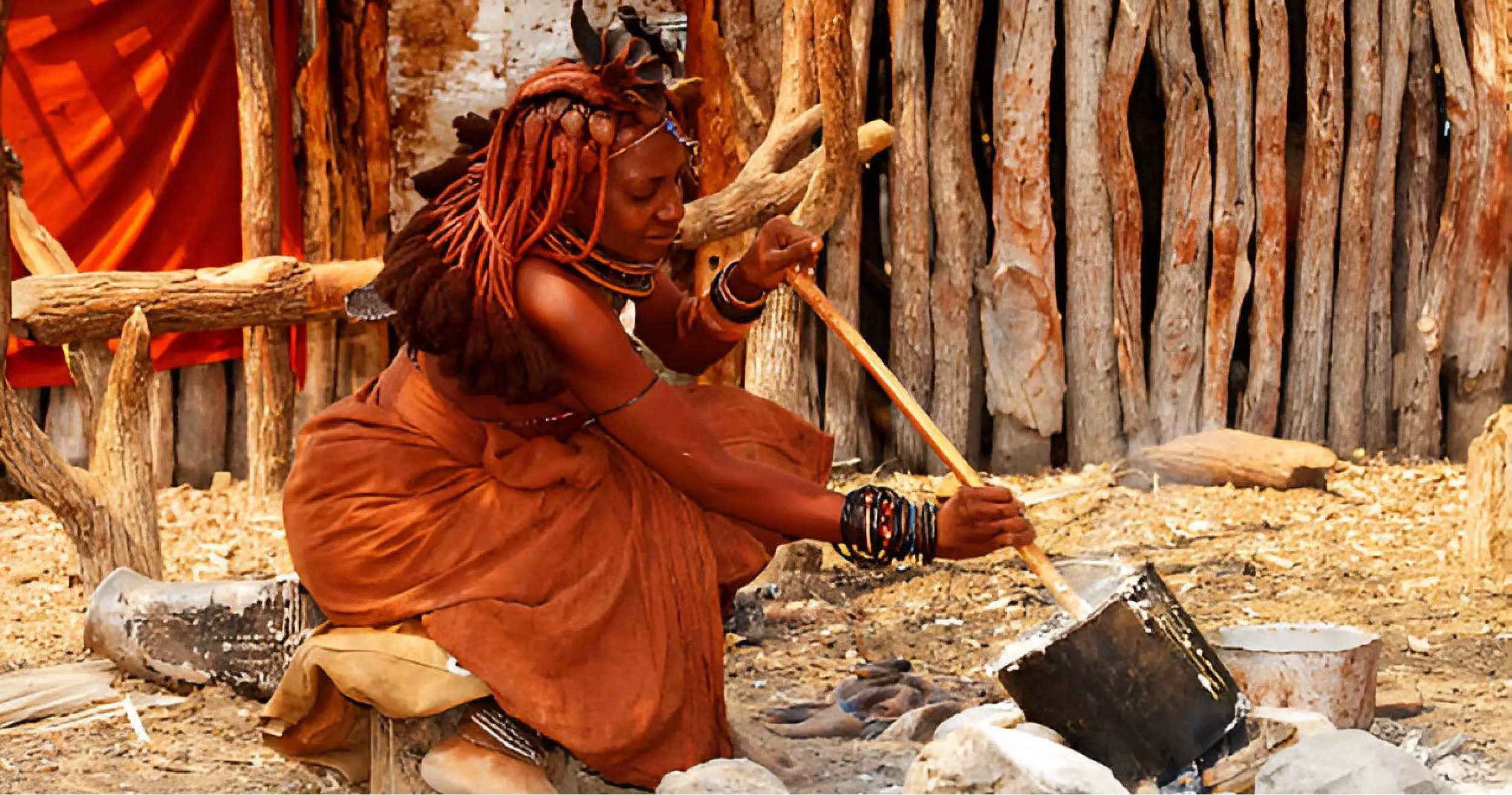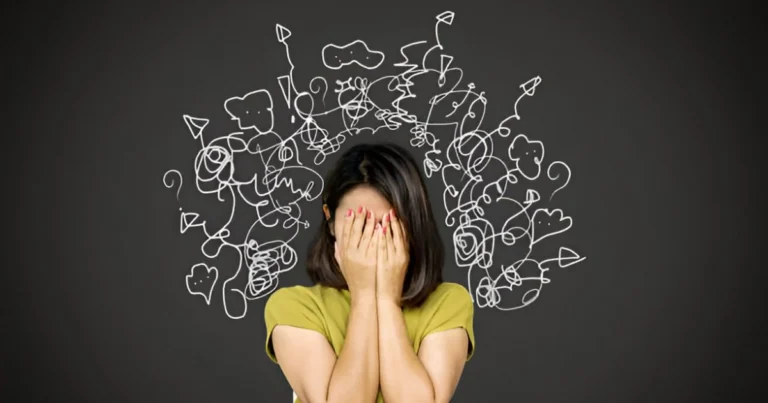The Himba and the hidden colors of the world
We tend to believe that our perception of color is universal: blue is blue, and green is green for everyone. However, what we see is shaped by our language, culture, and environment. Among the Himba, a tribe living in Namibia, the color spectrum is not divided in the same way as in Western languages. Their distinct vocabulary classifies colors differently, influencing how they perceive and distinguish them.
This fascinating phenomenon raises an intriguing question about the relationship between language and perception: do we truly see the same colors? Drawing from cognitive psychology and neuroscience research, let’s explore how the Himba offer us a key to understanding the diversity of human visual experience.
Color is not what you think: a cultural and neural illusion
“We see the world not as it is, but as our brain interprets it.”
What may seem like an abstract notion is, in fact, grounded in biology and cognitive psychology. Our perception of color, something we take for granted, is not merely a reflection of physical reality, it is shaped by our nervous system, language, and culture.
From a neuroscientific perspective, light that reaches the retina is transformed into electrical signals, which are then processed by the visual cortex. While this process is universal, color interpretation is not. Chromatic categories are not innate; they depend on the language we speak and the distinctions it imposes. Cognitive psychologist Stanislas Dehaene emphasizes that perception is an active construction of the brain, influenced by our environment and education. Contrary to the idea of passive perception, where the eye simply captures the world as it is, our neural circuits filter, select, and interpret stimuli based on patterns learned from childhood.
Perceptual categories are not biologically fixed but are shaped by cultural and linguistic experiences. A child exposed to a language that finely categorizes certain colors will develop an enhanced sensitivity to those distinctions. In contrast, a child from a culture that groups those nuances under a single term may perceive them as identical.
Studies on the Himba of Namibia illustrate this phenomenon: their language does not distinguish blue from green in the way Western languages do. Yet, they perceive subtle variations of green that most Westerners struggle to differentiate. This variability in perception suggests that language acts as a filter, shaping what we are capable of seeing.
Far from being a mere linguistic curiosity, this interaction between perception and language invites broader reflection on cognitive relativity: to what extent does the brain adapt to the cultural structures surrounding it?
The Himba: a different vision of the world
“What if we don’t all see the same rainbow?”
For the Himba, color perception follows a radically different logic than that of most other cultures. While many languages classify colors into precise categories, blue, green, red, their language segments the color spectrum uniquely. For instance, they do not have a specific word for blue, yet they have multiple distinctions for green, altering their ability to discriminate between these colors.
Experimental psychology research has demonstrated that this linguistic classification directly influences their visual perception. When asked to identify a slightly different shade within a series of green hues, they succeed more quickly than individuals from other cultures. Conversely, when faced with a single blue shade among greens, they struggle to distinguish it, whereas an outsider would immediately see an obvious difference.
This peculiarity goes beyond vocabulary; it reveals how the brain adapts to linguistic and cultural structures. The Himba do not perceive “fewer” colors; rather, they organize them differently. This suggests that perception is not dictated solely by biology but is also shaped by the cultural framework in which we evolve.
This raises a fascinating question: if our language structured colors differently, would our visual world be transformed as well?
How language influences color perception
“The limits of my language mean the limits of my world.”
This famous quote by Wittgenstein takes on new meaning when considering color perception. For decades, researchers in cognitive neuroscience and linguistics have wondered: do we truly see colors the same way if our language does not name them the same way? Studies on the Himba provide thought-provoking answers.
Cognitive psychology experiments demonstrate that linguistic categorization directly influences perception. In one well-known study, Himba participants were shown a circle containing 12 shades of green, with one slightly different from the others. Unlike Westerners, who struggled to detect the subtle variation, the Himba identified it instantly. However, when shown a circle containing a blue shade among greens, they found it difficult to distinguish, because their language does not clearly separate these two hues.
This phenomenon is explained by the well-documented Whorfian effect, which suggests that language shapes our thought and perception. When we name a color, we activate specific conceptual categories that facilitate its identification and memorization. For the Himba, the absence of a distinct word for blue limits their ability to isolate it quickly, whereas their rich vocabulary for green refines their ability to discriminate within that spectrum.
However, this linguistic influence on perception is not unique to the Himba. Studies show that in some Asian languages, which do not distinguish blue from green, speakers perceive these colors as a single entity. On the other hand, Russian speakers, who have separate words for light blue and dark blue, differentiate these shades more rapidly.
Thus, language is more than just a communication tool, it shapes how we see the world.
Color and cultural significance among the himba
Colors are not merely a matter of perception; they tell a story, reflect a way of life, and embody identity. For the Himba, color is not just a visual phenomenon, it plays a fundamental role in their culture, traditions, and even physical well-being.
A perfect example is red ochre. Mixed with butter and applied to the skin, this distinctive hue is not just an aesthetic choice; it provides protection against the scorching desert sun and symbolizes fertility and life. This link between color and function is omnipresent in their daily lives. The shades used in body painting, clothing, and even architecture carry specific meanings, often tied to nature and spiritual beliefs.
Moreover, certain colors are believed to have medicinal properties. Research by M. Buratti has shown that natural pigments extracted from minerals or plants are used for healing or soothing purposes, following orally transmitted traditions passed down through generations.
This perception of color differs greatly from the Western approach, which is often dominated by a utilitarian and industrial classification of shades. Among the Himba, color is a language, a vehicle for emotions and ancestral knowledge. It illustrates how each culture projects its own worldview onto the light spectrum, intertwining perception, symbolism, and identity.
Scientific perspectives on the Himba and their colors
The case of the Himba has sparked great interest among researchers in cognitive psychology and neuroscience, as it challenges the idea of a universal perception of color. If our eyes capture light in the same way, why don’t we all perceive the chromatic world identically?
Far from being fixed, our perception of color illustrates cognitive plasticity, the brain’s ability to adapt to linguistic and environmental constraints. Studies on the Himba show that their way of categorizing colors influences how they perceive them, but these results must be interpreted with nuance.
From a neuroscientific perspective, visual perception relies on a balance between primary sensory processing (handled by the visual cortex) and higher cognitive functions (language, memory, attention, etc.). This interconnection explains why distinct linguistic systems can influence how colors are perceived and categorized. Our language directs our attention to certain nuances while overlooking others. In other words, the language we speak shapes how we distinguish colors because our neural circuits adapt to the lexical categories available. If a language does not have precise terms for certain colors, its speakers may struggle to differentiate them.
However, critics of studies on the Himba argue that these perceptual differences could also be influenced by environmental and developmental factors. Living in an environment dominated by lush vegetation means being constantly exposed to a vast range of green hues. This perceptual plasticity is not solely dependent on language but also on specific cognitive training. Similarly, the chromatic distinctions established in Western languages are reinforced by education and early learning, structuring our neural circuits from childhood.
Ultimately, the study of the Himba illustrates a broader reality: color perception is neither purely biological nor strictly cultural. It emerges from an ongoing interaction between our brain structures and the experiences that shape our visual world. This dynamic interplay between biology and culture highlights how adaptable our brain is, an organ capable of reorganizing its neural circuits to meet the cognitive demands of its environment.
Do we all see the same blue? A look at perception across cultures
While light and wavelengths are universal, the way we perceive colors is not. Research across different populations suggests that certain color distinctions are shared across many cultures, implying a common biological basis. For instance, red is often associated with alertness or danger, likely due to its strong visual salience and its connection to biological stimuli such as blood or fire. Some neurobiologists argue that the fundamental mechanisms of the visual cortex are similar in all humans, supporting a degree of universality in color perception.
However, studies on the Himba, along with research on speakers of Asian languages that do not distinguish between blue and green or on Russian speakers who differentiate between light blue and dark blue, challenge this universalist view. The Whorfian effect, which posits that language shapes our thoughts and perception, suggests that linguistic structure deeply influences how we organize the visual world, leading to notable cognitive differences in color processing.
This phenomenon is not unique to the Himba. A study on the Berinmo people of Papua New Guinea found that they categorize color differently than English speakers, particularly in the yellow spectrum, making distinctions that English does not. However, they struggle to differentiate blue from green, as their language does not provide distinct terms for these colors.
Another striking example comes from the Inuit people, whose vocabulary for different types of snow far exceeds that of Western languages. Similarly, some African languages, such as Bassa in Liberia, classify colors into just two broad categories: warm colors and cool colors, limiting fine distinctions that are commonly made in European languages.
Thus, while the biological mechanisms of color perception remain constant, language shapes our perceptual boundaries, defining what stands out and what remains unnoticed. This phenomenon highlights cognitive plasticity, which allows humans to adapt their thought patterns and sensory perception to the constraints imposed by their linguistic and cultural environment.
If the studies on the Himba teach us anything, it is that between neurological universality and cognitive relativity, the brain adapts to cultural and linguistic distinctions, revealing its remarkable flexibility. In the end, seeing is not just a sensory act but an interpretation of the world, shaped by our history, environment, and language.
References
Dehaene, S. (2020). Psychologie cognitive expérimentale. Annuaire du Collège de France, (119), 25-38.
Dubois, D., & Cance, C. (2011). Mises en discours de l’expérience visuelle et cognition située : couleurs et espace. Corela – Cognition, Représentation, Langage.
Mollard-Desfour, A. (2019). La couleur garde-t-elle son secret ?. Sigila, 47(1), 25-39.
Preuil, S. (2021). Le tourisme ethnique des Himbas en Namibie. Tourisme & Sociétés, (29), 75-92.

Amine Lahhab
Television Director
Master’s Degree in Directing, École Supérieure de l’Audiovisuel (ESAV), University of Toulouse
Bachelor’s Degree in History, Hassan II University, Casablanca
DEUG in Philosophy, Hassan II University, Casablanca







